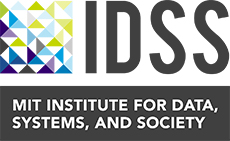Designing Ethical Clinical Trials
IDSS PI: Philippe Rigollet
Collaborators: Vianney Perchet (Université Paris Diderot), Sylvain Chassang (Princeton University), Erik Snowberg (California Institute of Technology)
The purpose of a clinical trial is to measure the effect of a treatment compared to a control such as the currently leading drug or a placebo if no such drug already exists. Most clinical trials are done in phases, typically four, in order to collect feedback at the end of each phase and either interrupt the trial or assign the drug more aggressively in subsequent phases; that is the ethical part: save or cure as many patients as possible within the trial itself. With this idea in mind, the ideal setup would be to collect feedback after each patient in the trial, but physical constraints often do not allow it. For example, one may need to wait for 6 months before seeing the effects of a drug. The questions associated to batching are then: (1) given a feasible number of batches in the imparted time and (2) how does one choose the size of the batches and what is the effect of batching compared to the setup where information is collected after each patient.
The mathematical results show that a very small number of batches (4 or 5) is already enough to qualitatively erase the effect of batching from the performance as measured by the total number of patient who were administered the best of the two treatments. Despite the presence of “pilots” in almost all clinical research and extensive research, there was no principled way of determining optimal sizes or number of pilots prior to this work.
References and Related Content:
“Batched Bandit Problems” – Annals of Statistics, May 2015.
“Ethical trials, targeted ads” – MIT News, September 2015.



